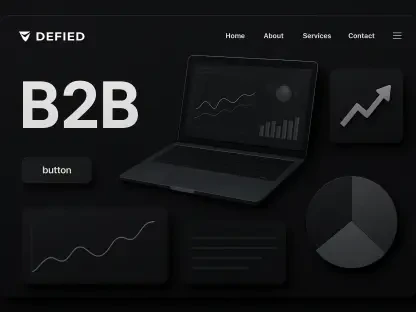In a rapidly shifting digital landscape, businesses are grappling with unprecedented challenges and opportunities driven by artificial intelligence and evolving market dynamics, prompting the need for innovative strategies. Digital marketing expert Tony Hayes has stepped forward with a groundbreaking newsletter that promises to equip marketers and entrepreneurs with the tools needed to thrive in this competitive environment. This comprehensive edition reveals 18 actionable strategies that address everything from AI automation to untapped market niches, offering a lifeline to those struggling to keep pace with technological advancements. With insights drawn from real-world case studies and expert contributions, the newsletter serves as a vital resource for navigating the complexities of modern marketing. It highlights not only innovative approaches to content creation and search optimization but also critical warnings that could prevent significant financial losses. This release marks a pivotal moment for professionals seeking to adapt and excel in an AI-driven business world.
1. Harnessing AI for Unmatched Automation
The power of AI in marketing automation is transforming how businesses operate, and Tony Hayes’ latest insights delve into this revolutionary trend with striking clarity. One standout revelation is how creators are generating over $100,000 monthly by leveraging AI-powered ad generators and theme pages. These tools allow for the automation of user-generated content (UGC) creation using simple product images, eliminating the need for extensive filming or large creative teams. The result is a constant stream of traffic across platforms like TikTok, Instagram, and YouTube Shorts, operating around the clock. This approach democratizes content production, enabling even small businesses to compete with larger players by minimizing overhead costs while maximizing reach. Hayes provides detailed strategies to implement these techniques, ensuring that marketers can quickly adapt to this efficient model and see tangible results in their campaigns.
Beyond the creation of content, AI automation extends to optimizing engagement and scaling operations with minimal human intervention. Hayes emphasizes the importance of integrating AI tools that can analyze performance data and adjust strategies in real time, offering a competitive edge in fast-paced digital spaces. For instance, automated systems can tailor ad placements and messaging based on audience behavior, ensuring higher conversion rates without constant manual oversight. This level of efficiency is particularly beneficial for businesses aiming to expand their presence across multiple platforms simultaneously. Additionally, the newsletter highlights how these AI breakthroughs can be customized to suit various industries, from e-commerce to service providers, ensuring broad applicability. By adopting such technologies, companies can not only save time but also allocate resources to other critical areas like innovation and customer experience, paving the way for sustainable growth in a crowded market.
2. Uncovering Hidden Market Opportunities
One of the most eye-opening aspects of Hayes’ strategies is the exposure of overlooked industries that represent significant financial opportunities for savvy marketers. These “boring” sectors, often ignored by mainstream digital marketers, collectively offer over $500 million in potential revenue. Luxury physical goods companies, high-end construction firms, and medical device manufacturers are among the niches desperate for basic digital solutions, often paying upwards of $50,000 without negotiation. Hayes illustrates this with a case study of a marble importer that boosted revenue by $6 million through fundamental digital marketing tactics. This demonstrates how even rudimentary strategies can yield extraordinary results when applied to underserved markets, providing a blueprint for marketers to tap into these goldmines with minimal competition.
Further exploration of these untapped markets reveals the simplicity and scalability of the solutions they require, making them ideal targets for digital transformation. Hayes points out that many of these industries lack the in-house expertise to navigate online platforms, creating a demand for services as basic as website development or social media management. By positioning themselves as problem-solvers, marketers can secure high-value contracts with relatively low effort compared to oversaturated sectors. The newsletter provides actionable steps to identify and approach such clients, emphasizing the importance of understanding their unique pain points and tailoring pitches accordingly. This strategic focus not only opens new revenue streams but also builds long-term partnerships, as these businesses often seek ongoing support to maintain their digital presence in an increasingly connected world.
3. Adapting to the SEO Evolution with GEO
The shift from traditional search engine optimization (SEO) to Generative Engine Optimization (GEO) marks a critical turning point for digital marketing, and Hayes’ newsletter offers a deep dive into this emerging field. With AI engines like ChatGPT, Perplexity, and Gemini gaining prominence alongside Google, businesses must now optimize content for a dual landscape. Expert contributor Alex Groberman shares a system that generated $27,000 in just 30 days by driving traffic from both conventional search engines and AI platforms. This approach requires a nuanced understanding of how generative engines interpret and prioritize content, often favoring conversational and context-rich formats over keyword-heavy text. Hayes’ strategies provide a roadmap for adapting to these changes, ensuring that marketers remain visible in an era where search behaviors are fundamentally transforming.
Delving deeper into GEO, the newsletter underscores the need for content that aligns with the predictive and personalized nature of AI-driven search tools. Unlike traditional SEO, which often relies on static optimization techniques, GEO demands dynamic updates and a focus on user intent to maintain relevance. Hayes highlights practical methods for restructuring content, such as integrating natural language patterns and anticipating common queries that AI systems might surface. This not only boosts discoverability but also enhances user engagement by delivering more relevant results. Additionally, the importance of cross-platform consistency is stressed, as AI engines pull data from various sources to construct responses. Marketers who master these techniques can position themselves ahead of competitors still clinging to outdated practices, securing a stronger foothold in the evolving digital search ecosystem.
4. Navigating Security Risks in Digital Marketing
A sobering reminder in Hayes’ newsletter is the critical need for robust security measures in digital marketing, underscored by real-world cautionary tales. One such story involves a business owner who faced potential six-figure losses due to a malicious freelancer injecting redirect code into a high-traffic funnel. This incident highlights the devastating impact of inadequate access control and the necessity of regular code audits to prevent similar breaches. Hayes emphasizes that as businesses increasingly rely on third-party collaborators and digital tools, the risk of such vulnerabilities grows. The newsletter offers practical advice on implementing strict permission protocols and conducting routine security checks, which could save companies from catastrophic financial and reputational damage in an era where trust is paramount.
Expanding on security concerns, the guidance provided extends to proactive strategies that fortify digital assets against evolving threats. Hayes details how businesses can safeguard their operations by vetting external partners thoroughly and investing in monitoring systems that detect anomalies in real time. The importance of educating team members about phishing scams and other common cyber threats is also highlighted, as human error often serves as the weakest link in security chains. By fostering a culture of vigilance and integrating advanced protective tools, companies can mitigate risks that might otherwise derail their marketing efforts. These insights are particularly relevant for small to medium-sized enterprises that may lack dedicated IT departments, offering them a feasible framework to protect their digital presence while focusing on growth and innovation.
5. Reflecting on Strategic Milestones
Looking back, the release of Tony Hayes’ newsletter marked a significant moment for digital marketers seeking clarity amid rapid technological shifts. The 18 strategies presented offered a robust framework for leveraging AI automation, uncovering hidden market opportunities, adapting to new search paradigms, and safeguarding against security threats. Each insight was grounded in practical examples and expert input, ensuring that businesses could apply these lessons with confidence. The emphasis on real results and actionable warnings resonated deeply with professionals who had struggled to keep up with the pace of change. This collection of tactics not only addressed immediate challenges but also laid the groundwork for long-term resilience, reflecting a keen understanding of the digital economy’s complexities. As the industry continues to evolve, the impact of these strategies will likely be felt in how marketers approach innovation and risk management in the years that follow.









